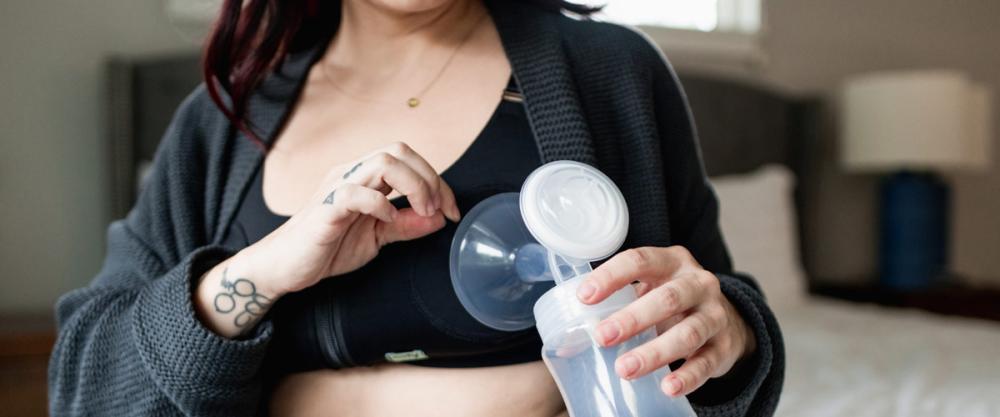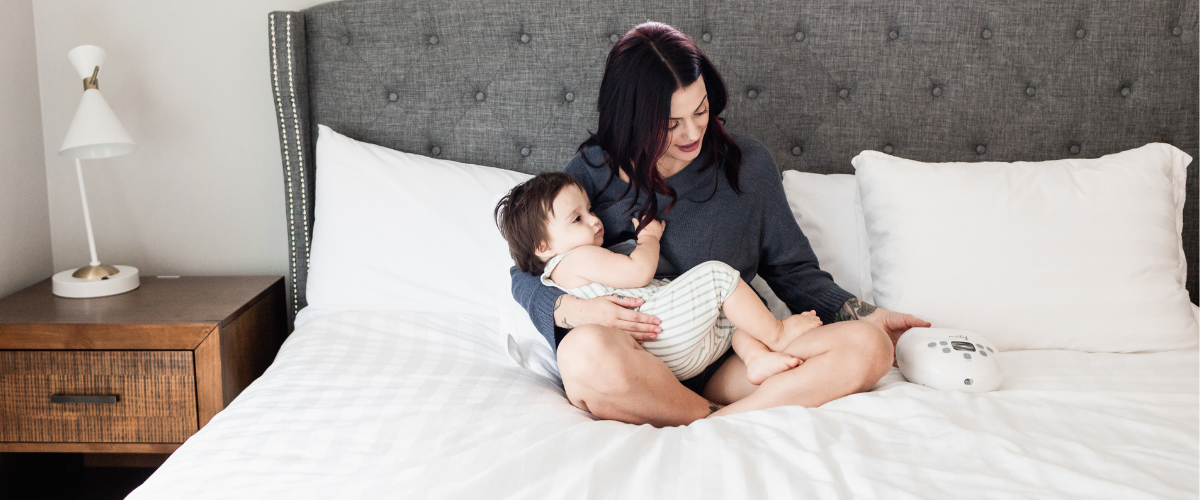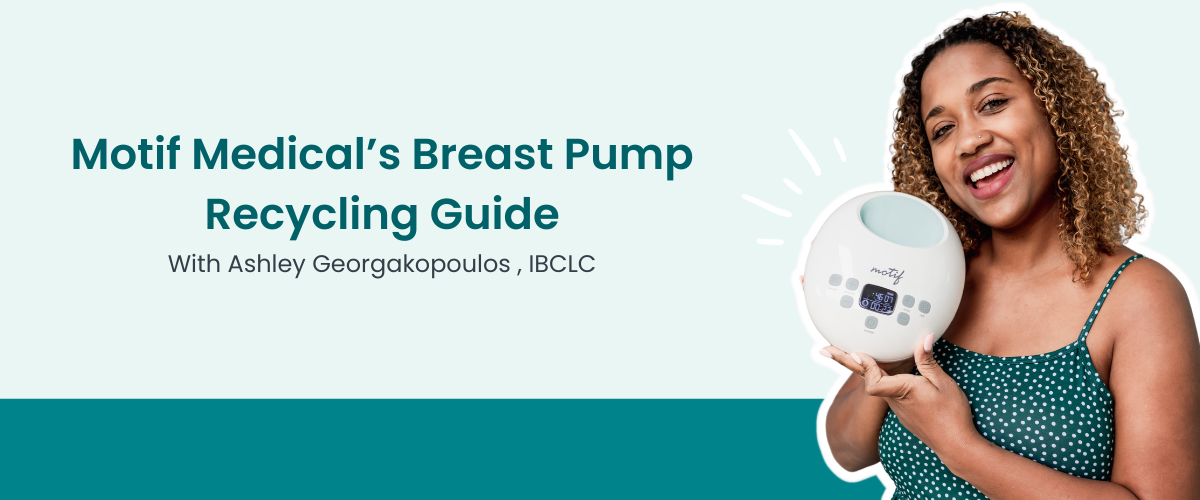This post was written by Motif Medical's Lactation Director Ashley Georgakopoulos, an International Board Certified Lactation Consultant (IBCLC) who specializes in the clinical management of breastfeeding.Difficulty latching, pain, prematurity, and physical anomalies, such a severely inverted nipples or flat nipples are common reasons for utilizing a nipple shield for temporary relief and assistance.
Nipple shields were once thought of as a “quick fix” for breastfeeding pain, under the guise of pain being a normal thing to expect and work through when you breastfeed. All of this without the understanding that pain isn’t going to fix itself in most, if not all, situations. Unfortunately this unguided use and distribution of shields led to low milk supply, inability to have the baby latch or suckle without the shield if it became a crutch, or overall cessation of breastfeeding when the obstacles interfere with obtaining enough milk.
- Nipple pain or sore nipples
- Damaged nipples; cracked, bruised, blistered, pinched, chaffed
- Inability to latch or stay latched properly; tongue tie, prematurity, severely flat or inverted nipples (actually tethered internally, unable to extend at all or stimulate)
- Pain due to severely inverted nipples, as the tissue prevents full extension of the nipple
- Bottle weaning due to the firm, pre-shaped bottle nipple
- Raynaud’s; poor circulation, in this case, to the nipple, causing numbing or pain


Now we know there can actually be issues stemming from the use of nipple shields, especially if using without the guidance and follow up of a breastfeeding professional, an IBCLC.
Thankfully, the guidance and practice is changing in the hospital settings from the Joint Commission to decrease the amount of nipple shields given out without this very important piece to the equation. But like many changes to policy, practices and habits take time, and education is still needed for both the family and the medical professional.
What Are Nipple Shields and How Do They Work?
A nipple shield is a tool, often provided in the earlier days postpartum, that is used to cover and protect the nipple, while allowing the baby to still latch and remove breast milk. This tool is used as a way to ease the breastfeeding experience if a new mother is struggling with sore nipples, poor latch, and other issues that may arise for some when breastfeeding. The silicone designs enable latching, protection, flow, and positioning to stay consistent throughout the feeding.
They even aid speech and language aspects with their firm nipple design when learning proper tongue function. Some designs are more preferable to others, such as the cut-out design, exposing areas of the areola, which enables more skin-to-skin contact from the baby’s mouth to the breast. Other differences from shield-to-shield are sizing, like in pump flanges, and flow rate.
Common Uses for a Nipple Shield
Signs of Poor Latching and Breast Milk Removal
Nipple damage and pain are common signs, but are not always part of the equation.
Engorgement and mastitis are red flags for poor milk removal, and many times, are directly related to poor or shallow latching and inadequate suction seals formed at the mouth. Make a note to observe the shape of the nipple prior to feeding. Any significant change after the feed should be taken into consideration. Common changes can look like: lipstick shape, harsh seam across the tip, and blanching. These can due to positioning, gestational age, and the presence of lip and tongue tie(s).
Other signs can be weight loss or plateau, development of jaundice or recurrent jaundice, and frequent letting go at the nipple or frustration despite hunger.
How to Fit and Use the Nipple Shield
Step 1: Size and Select
If able to measure ahead of time, you can pinpoint the size shield you need much faster. Using a measuring tape or string and ruler, measure (mm) the nipple diameter, not including the areola. Add 4-5 mm to the total, and that is your size. Ex: 16 mm nipple would need a 21 mm shield.
See considerations prior to buying your shield.
Step 2: Apply
Fold the nipple shield open to allow the your nipple to fill the area as deeply as possible. Fold the edges back to the areola and rest of breast to secure the suction.
Step 3: Use
You may need to massage out milk prior to having baby latch. This will pool a little inside the shield, allowing to drip slowly and for the baby to smell and sense the presence of milk. The silicone barrier between your skin and their mouth may otherwise hide the intention. To ensure a deeper latch, aim the baby’s nose at the nipple to encourage a wider gape.
Considerations
When deciding to utilize a nipple shield, prioritize making a plan to keep it as a short-term “band-aid” and not a permanent fix-all or indefinite one.
- The first step is working closely with an International Board Certified Lactation Consultant, or IBCLC. The reasons being they will have the knowledge, experience, and resources to not only identify the root cause of needing the shield, but providing resources and a game plan to come off the shield, while simultaneously assisting the mother with tools to protect her milk supply and goals.
- Once the root cause for the need has been identified, ensure a proper fit. The nipple should rest comfortable inside, without rubbing. The size will also affect the flow. For some, a slow flow nipple end is ideal. For premature babies, however, little effort is ideal, so a faster flow, larger hole diameter, is the way to go.
- Before you select your shield: The tip of the nipple shield will have several holes or one. Check the packaging for the milk flow rate described by the design of the nipple shield, much like with bottle feeding and nipples. Slow flow may be recommended for certain breastfeeding problems, such as helping the baby control a fast let down or if they have ties. A faster flow may be needed, however, where having less energy expenditure is important, such as with prematurity and trouble with weight gain.
- Weight checks are necessary to properly evaluate use of or need for nipple shields for breastfeeding. Your IBCLC should perform what is called a “weighted feed.” This, along with discussing diapers and output, is to ensure milk transfer is happening, and also allows for the decision to pump additionally to supplement and protect the supply. The baby’s healthcare provider or pediatrician should also be mindful of weight vs. weighted feeds when assessing weight gain, supplementation, milk supply needs, etc.
- Once issues have been resolved to the point of weaning off of the shield, follow up to ensure proper latching, milk removal, and assistance with the weaning as needed.
Cleaning
Initially, shields should be sterilized and cleaned with soapy water prior to their first use if their packaging does not say, “sterile.” In between feedings, however, they typically do not need sterilizing. Once per day, and as needed, hot soapy water is perfect, scrubbing with fingers inside and out of the shield. Allow to dry and store in a dry container.
Remember, nipple shields are a temporary solution to help get the mother and baby on track to their goals, buying time to seek help and form a plan, and should always go hand-in-hand with working closely with an IBCLC. Its another tool in your tool box!









